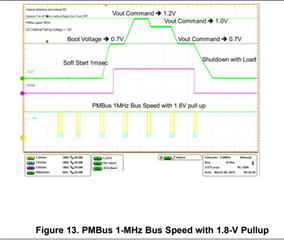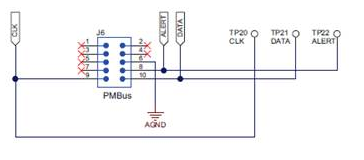Hi Team,
Customer wants to change the voltage setting in the internal NVM.
It will be difficult for my customer to turn the output off while device is operating to use STORE_DEFAULT_ALL, as they would end up violating their power startup sequencing.
We configured TPS549D22 default output to 0.975V.
As soon as we update output voltage change or frequency change from FPGA via PMBus interface will it take some time to update the new changes we done? if yes, what is the time interval?
or is it requires power on reset to update new changes?
If we change switching frequency or ss configuration do we need to re-boot the IC or not
Regard's
Raghavendra M




